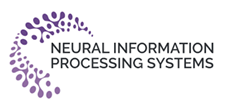
ΑΙhub.org
news
Congratulations to the #ICML2023 outstanding paper award winners
Six outstanding paper awards were given at this year's conference.
26 July 2023, by
AIhub
What’s coming up at #ICML2023?
What does the programme of the International Conference on Machine Learning have in store?
20 July 2023, by
Lucy Smith
What’s coming up at #RoboCup2023?
The annual RoboCup event kicks off on 4 July - find out more about the competitions and symposium.
03 July 2023, by
Lucy Smith
European parliament approves draft EU AI act
Negotiations with EU countries on the final form of the law have now begun.
16 June 2023, by
Lucy Smith
#ICRA2023 awards finalists and winners
In this post we bring you all the paper awards finalists and winners presented during the 2023 edition of the IEEE International Conference on Robotics and Automation (ICRA).
12 June 2023, by
Robohub and Daniel Carrillo-Zapata
Congratulations to the #IJCAI2023 award winners
The winners of the prestigious IJCAI awards for 2023 have been announced.
08 June 2023, by
Lucy Smith
Latest AI announcements from the US Government include updated strategic plan
Find out more about the latest initiatives pertaining to responsible AI in the USA.
26 May 2023, by
Lucy Smith
2023 landscape – a report from the AI Now Institute
The latest report from the AI Now Institute diagnoses concentration of power in the tech industry as a pressing challenge.
12 April 2023, by
Lucy Smith
2023 AI Index Report released
Read the latest edition of the AI Index Report which tracks and visualises data related to AI.
05 April 2023, by
Lucy Smith
Missing links in AI governance – a new book release
In a project led by Mila and UNESCO, AI experts have contributed to a book on AI governance.
29 March 2023, by
AIhub
AI transparency in practice: a report
Mozilla Foundation and Thoughtworks have published an interdisciplinary report on AI transparency.
22 March 2023, by
Lucy Smith
Happy International Women’s Day!
We take a look back over the past year of AIhub content and highlight some of our favourite articles, interviews and podcasts.
08 March 2023, by
Lucy Smith
Edith Elkind wins the 2023 ACM/SIGAI Autonomous Agents Research Award
Congratulations to Edith on winning this prestigious award!
13 February 2023, by
Lucy Smith
Congratulations to the #AAAI2023 best paper winners
The winners of the following best paper AAAI awards were presented today at the conference: outstanding paper, outstanding student paper, and distinguished papers.
11 February 2023, by
Lucy Smith
Congratulations to the #AAAI2023 award winners
Find out who has won the prestigious 2023 awards for their contributions to the field.
09 February 2023, by
Lucy Smith
What’s coming up at #AAAI2023?
Find out about the talks, workshops, tutorials, and other events scheduled at AAAI this year, taking place from 7 - 14 February.
03 February 2023, by
Lucy Smith
ROBUST AI programme receives additional €25 million in funding from Dutch Research Council
Total project budget of over 87 million, including 17 new labs and 170 new PhD candidates over 10 years.
10 January 2023, by
University of Amsterdam
Affinity group round-up from NeurIPS 2022
We share some highlights from the affinity group workshops at NeurIPS 2022.
08 December 2022, by
Joe Daly
Call for AI-themed holiday videos, art and more
Send us your AI-generated art, pictures, poems, datasets, music, films...
02 December 2022, by
AIhub
Watch the keynotes from the European Big Data Value Forum
The EBDVF event was held on 21-23 November, and you can catch up with the plenary and keynote talks which were recorded.
25 November 2022, by
Lucy Smith
Using machine learning to help generalize automated chemistry
Artificial intelligence, “building-block” chemistry and a molecule-making machine were combined to find the best general reaction conditions for synthesizing chemicals.
21 November 2022, by
University of Illinois
#IROS2022 best paper awards
Find out about the papers that received an award at IROS this year.
15 November 2022, by
Daniel Carrillo-Zapata and Robohub
Launch of the AI Standards Hub
Find out more about the UK-based initiative "AI Standards Hub" and how it aims to support the community.
14 October 2022, by
Lucy Smith
European Union liability rules for artificial intelligence
The European Commission has released a proposal for an Artificial Intelligence Liability Directive.
06 October 2022, by
Lucy Smith
United States blueprint for an AI bill of rights
Five key protections to which everyone in America should be entitled.
05 October 2022, by
AIhub
What happens when we mix multi-agent systems, robotics, software engineering, and verification and validation?
Find out more about the workshop on Agent and Robots for reliable Engineered Autonomy
Bipedal robot achieves Guinness World Record in 100 metres
Cassie the robot, developed at Oregon State University, records the fastest 100 metres by a bipedal robot.
29 September 2022, by
Oregon State University
Towards greener and sustainable cities – an event from the Alan Turing Institute
Listen to the talks from this event on developing greener and more environmentally friendly cities using urban data analytics.
19 August 2022, by
AIhub
Watch the talks from the ACM Conference on Fairness, Accountability, and Transparency
Catch up on all of the keynotes, tutorials and research presentations from FAccT 2022.
18 August 2022, by
Lucy Smith
Congratulations to the authors of the #IJCAI2022 distinguished papers
The IJCAI 2022 distinguished paper awards have been announced at the IJCAI-ECAI 2022 conference in Vienna.
28 July 2022, by
Lucy Smith









